Don't let silk scare you
More than any other fabric, silk is shrouded in myth about its supposed delicacy and difficult upkeep.
"They say you shouldn’t soak it or even get it wet, that it must be dry cleaned, that your perfume will ruin it, the sun too, and ironing. In fact, don’t even look at it sideways."
Even our advice errs on the side of caution: Treat silk with care, especially the finer fabrics, and to take your really special silk clothing to a good dry cleaner.
At the same time, we know that you also want to use silk to make everyday pieces that are fairly easy to care for.
Since we at Sartor pride ourselves on knowing what we sell, we regularly test our fabrics and for this article we’ve repeated our tests on a representative selection of our silk fabrics. Here is what we learned, complete with photos. Our results may surprise you.
Some silk fabrics are fairly easy to wash and care for.
In fact, if you follow a few simple rules, you can care for the bulk of your silks at home. Even fine silk satin and silk chiffon came through the wash unscathed. For most of the silk fabrics we tested, washing softened them and shrank them just a bit – par for the course for more pedestrian fabrics like cotton and rayon. Here are a few general tips before you get started.
Silk care basics
Silk changes when you wash it
Nearly all types of silk fabric change after soaking in water. Most of them soften, some may shrink slightly or become less glossy, or stray filaments may rise from the surface.
Of course, laundering changes any fabric. It’s just that when it’s a cotton t-shirt you kind of expect that the seams will creep and it will start to pill up. A silk blouse is different – you want it to look good for a long time.
That’s one reason we recommend treating your special silk pieces with care and having them professionally cleaned.
Silk is more delicate when wet
Reduced tensile strength when wet is a general characteristic not just of silk, but of all protein-based materials (wool, cashmere, alpaca, etc.). For plant-based materials the opposite holds true. That’s why you can put cotton and linen in the high spin cycle and hang them on the line to dry.
Wet silk is only 80% as strong as it is when dry, so its fibers can break more easily and stretch out of shape. That’s why you need to be so careful when washing, wringing and drying silk.
The garment itself may be delicate
You can’t judge the washability of a garment just by what fabric it’s sewn from. Washing (or even soaking) can also damage interfacing, ornamentation, and embroidery.
Tailored items like blazers or formal dresses with complex cuts, are often shaped with an iron while sewing and interfacing of any number of woven or non-woven materials may have been stitched in. Even if the outer fabric came through the wash without any change, the garment itself may lose its shape for good.
Better pieces deserve a trip to the dry cleaner, as do suits or wool coats.
Can you wash silk?
Can you hand wash silk? And can you wash silk in the washing machine? Let's look at the chemistry first. Since different fabrics are made of different materials, their pH value (their level of acidity) varies accordingly. You may have noticed that laundry detergents come with a variety of pH values. They can be alkaline or acidic. Most ordinary detergents are alkaline because most of the things we wear are made of plant-based materials like cotton and rayon.
What detergent is best for silk
Protein-based fibers like silk are sensitive to alkaline detergents. Most powdered laundry detergent is alkaline, as are washing soda, chlorine bleach, and some soaps. Alkalis weaken the silk filament, causing it to soften, lose its shine, and release stray fibers.
Never wash silk in an alkaline detergent!
Use only laundry solutions meant specifically for silk or wool.
In a pinch, you can use a gentle silicone-free shampoo. Before using any laundry product, even those meant for hand washing, make sure that it is marked safe for silk and wool.
To test your laundry detergent, you can use litmus paper (pH indicator), which is available at most pharmacies and drug stores.
The bluer the litmus paper turns, the higher the pH (more alkaline and thus worse for washing silk). Ordinary laundry powder is highly alkaline (pH 11) whereas shampoo and laundry gel for silk both have a neutral pH (around 6). Classic laundry gel and hand laundering products are slightly alkaline (pH 7–8).

How to wash silk by hand
Be as gentle as possible when caring for silk – that means gentle detergents and gentle handling.
Hand washing is best. Find a basin (or a clean bathtub) that will hold the garment with room to spare. Mix a bit of silk-safe laundry solution in tepid water (around 80°F / 25–30°C), submerge your garment and let it soak for 15 to 30 minutes. Then gently stir it around with your hands – don’t scrub or twist it.
Drain the dirty water and add clean, fresh water (also tepid) and gently stir to rinse. Don’t use fabric softener – silk doesn’t need it and the film that it leaves on the surface will reduce the natural breathability and absorbency of your silk clothing.
How to wash silk by machine
Most modern washing machines have a gentle cycle that mimics hand washing, sloshing your clothes around in a fair amount of water. Go ahead and use it. Just make sure to set the temperature to a low setting (80 °F / 30 °C) and fill the machine to no more than half.
Turn off the spin cycle entirely.
If your washer has an extra water setting, use it. Water acts as a buffer between your silk clothing and the sides of the washing drum, so the more water, the less contact.
When machine washing especially delicate pieces, such as scarves and blouses, put them in a lingerie bag.
How to dry and iron silk
Never, ever, wring silk out. Don’t forget that silk loses much of its strength when it’s wet and wringing it out will damage it.
Lay each wet piece on a clean, dry towel and roll it up. The excess water will soak into the towel. To finish drying, lay the garment flat.
Press it while it’s still a bit damp. Damp silk is much easier to iron.
Try airing it out
Because silk has a natural self-cleaning property, sometimes hanging it out is enough. A dress or blouse worn for three hours to the theater may only want a couple of hours on a hanger – ideally out of doors (summer or winter but sheltered from rain and sun).
A good airing can even get rid of the smell of cigarette smoke or strong perfume.
The great silk washing test
Here at Sartor, we put our silk fabrics to the test. In several weeks of rigorous testing, we hand washed samples of all the basic silk fabrics we carry. Some of them we really put through the wringer – submitting them to harsh chemicals and rough treatment. Here’s how it turned out.





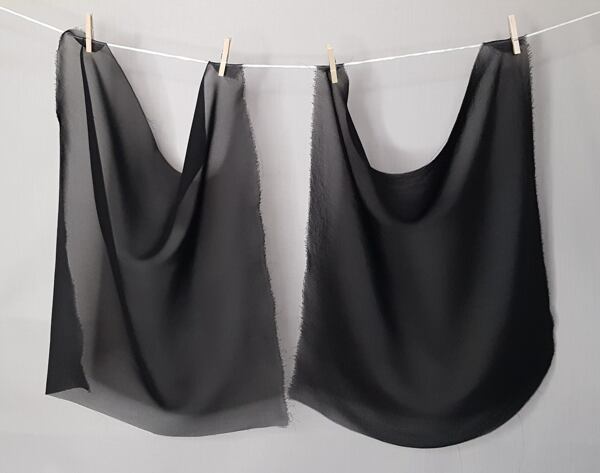







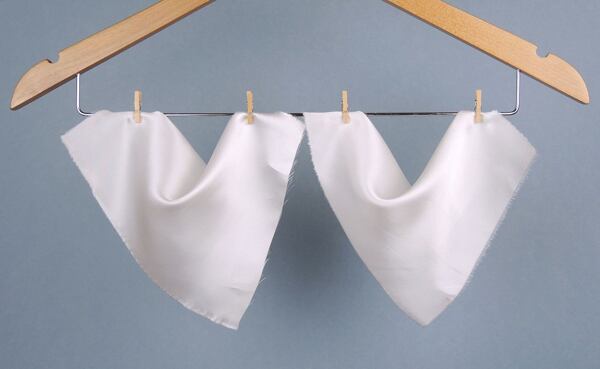




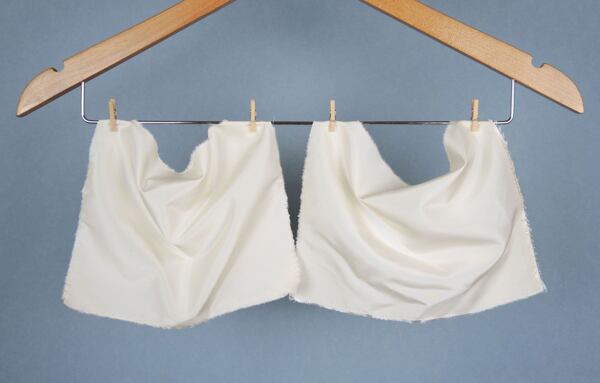


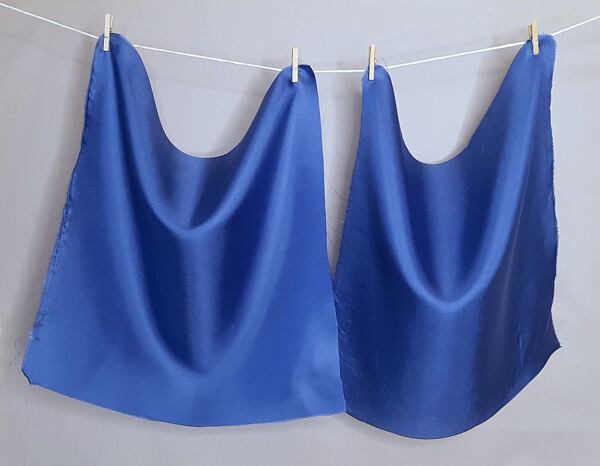






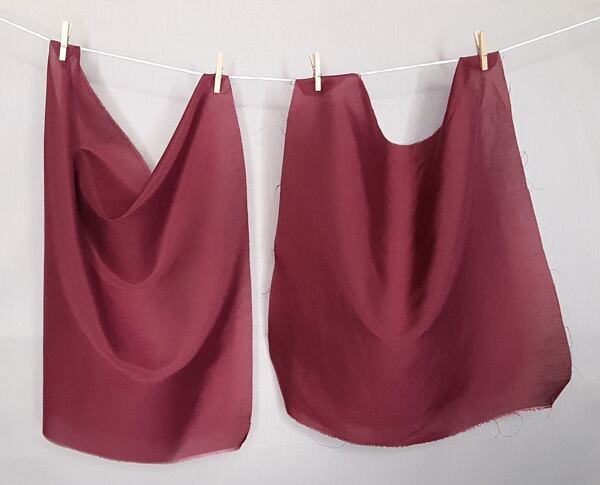




Comments(1)